![]() The Plants Issue
The Plants Issue
Read the Editor’s Note
The first time I picked a wild blueberry, it blew my mind. Growing up, I understood that fruits and vegetables found at the grocery store came from the ground, but always thought they had to be planted by human hands. The idea that food was wild and had a life of its own was beyond comprehension, so when I first moved to Asheville and a new friend offered to take me blueberry picking, I accepted the exotic adventure. Standing in the midst of thousands of blueberry bushes was like walking into a temple, and for every berry I put in my basket, there were three in my mouth. I had discovered the garden of eden.
Alan Muskat had a similar experience. Though he is now revered in Western North Carolina as the resident mushroom expert, Muskat’s first encounter with wild food was witnessing people picking blueberries on a hike as a college freshman. “The experience was shocking to me. I had never seen anyone do that before, and I was amazed.” Drawn to the outdoors, he enjoyed hiking often, but wouldn’t discover his connection to plants for a few more years.
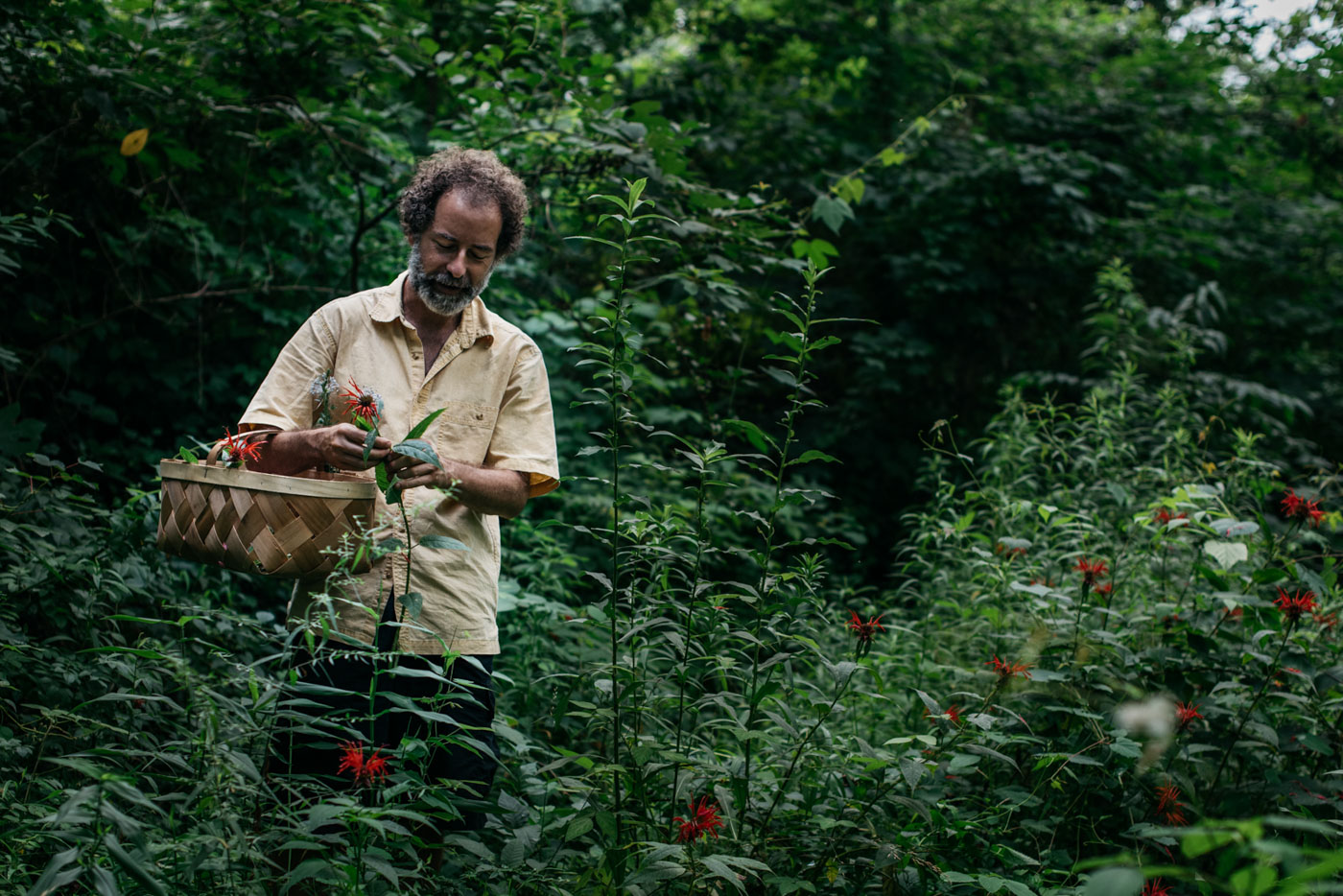
In college, Muskat preferred eastern theology to botany. He majored in philosophy, and found a particular interest in the primitivist teachings of taoism and the alienation of early marxism. “I had the thought to be a back-to-the-land, hippy commune-joining homesteader. I wanted to live naturally, but homesteading is not just about getting back to the land, it’s about getting out of the system. The food is free, so you don’t need a job to pay for it.” He applied the same theory to dumpster diving. People threw away food and housewares that, for Muskat, were perfectly useful. It made sense to collect anything that was available to him. A tent with a broken pole could be perfect for shielding berry bushes from hungry birds.
On his own for the first time, Muskat learned to cook for himself. He joined a co-op, where he developed an appreciation for organic, whole foods. He learned about edible species native to the Appalachia and after reading books like The Vegetarian Myth and Against The Grain, became a vehement objector to any form of agriculture. We often see videos circulating the internet exposing big farms and the dangers they present, but to Muskat, even personal gardens are detrimental to the environment. He believes they not only deplete the soil of nutrients, but also require a lot of cleared space, which means less habitats for wildlife. Western North Carolina is a host to hundreds of plant species, some of which do not grow anywhere else in the world. Many of the native plants are either edible or medicinal. “When you pull weeds, what you’re getting rid of is powerful herbal medicine.”
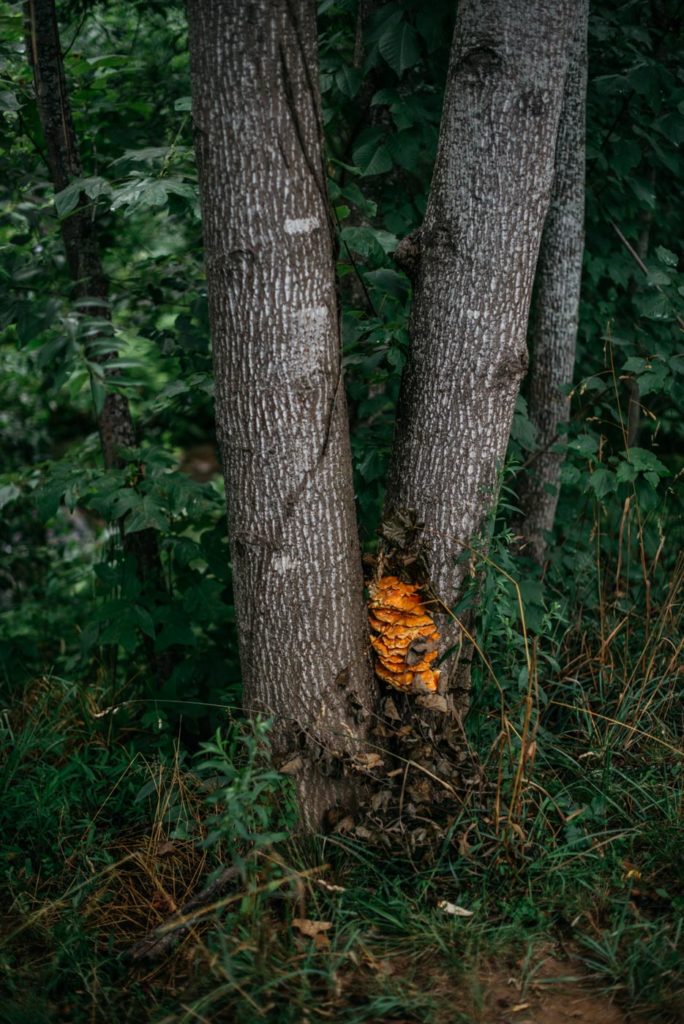
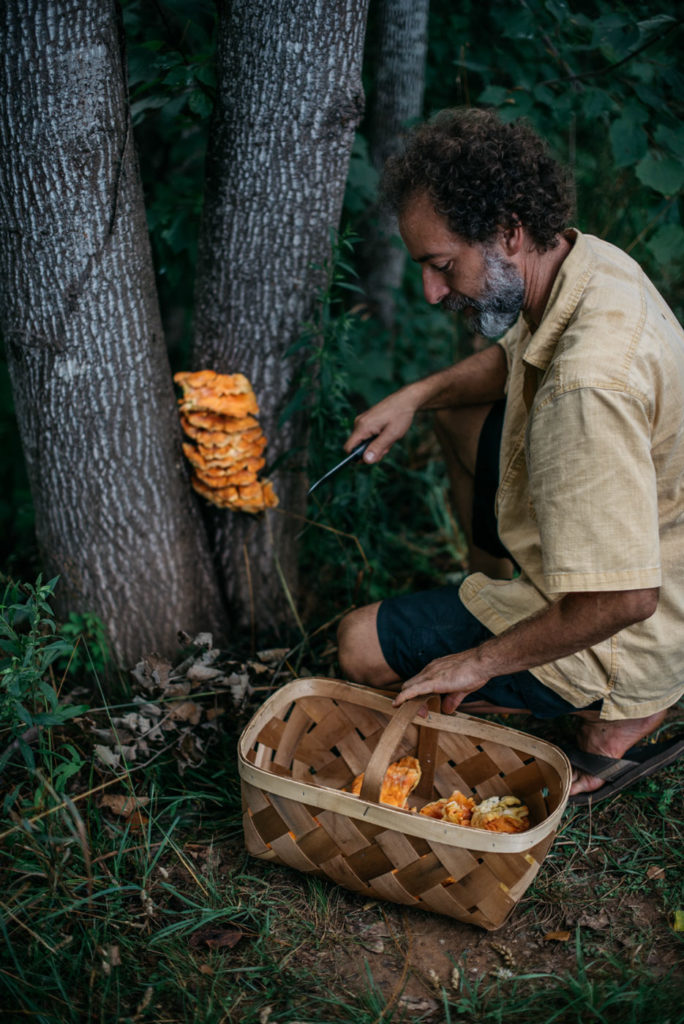

A loss of genetic biodiversity allows invasive plants to thrive. Many common garden plants are cultivars, plants selectively propagated for certain traits, and too often, for their size and aesthetic purposes. Cultivars may not taste as good as native varieties, and sometimes lack the abundance of nutrients. When we put all of our faith in a handful of varieties, we put the entire population at risk; one nasty disease could destroy the entire species. Muskat feels we have a responsibility to the earth to eat what has already been given to us.
With this newfound passion, Muskat returned to the land to forage for food, and realized he didn’t have to take an arduous hike to find enough for sustenance. Everything he needed could be found right outside his door. “There’s more wild food in the city than there is in the country.” He believes food often grows where it is needed most, and when given space to thrive, there is plenty of it. And he didn’t just forage enough to feed himself. In the early 1990s, Muskat started supplying restaurants all over the Asheville area with wild foods such as daylilies, violets, and ramps–only about 10% of what he sold to them was mushrooms. And it wasn’t difficult to find buyers. “Many local chefs are eager for the challenge and variety that wild food has to offer.”
Unfortunately, foraging is not a comfortable year-round job, but Muskat finds great joy in teaching, or as he calls it, “taking people out to eat.” He shows small groups where to spot different types of mushrooms as well as other wild food. And even when it’s not there, people are still eager to learn; in the winter, Muskat takes students on walks, teaching them the basics of where they should look, and over the seasons, they develop the ability to identify plants even when they’re not ready. He encourages everyone to speak up and share their knowledge during these outings; sometimes he doesn’t know a plant, and a student winds up teaching him. “A lot of what they do in schools is the opposite of what really works. In school, when you share answers, it’s called cheating, but I think we should be cheating. It’s a smart way to learn wild food, you’re just getting it from somebody else.”
——

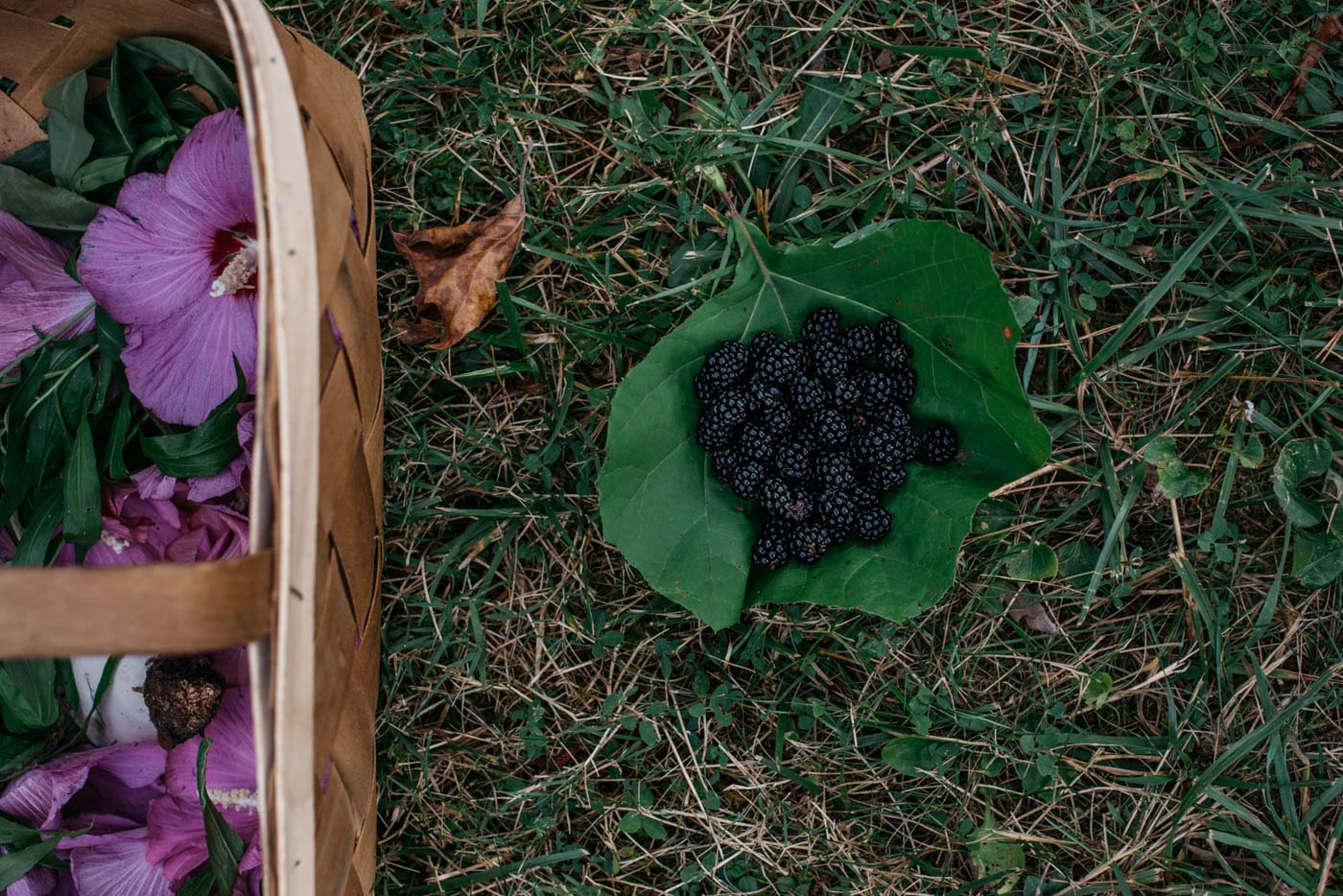
Recently, I had the opportunity to join Muskat in a program he calls “Forage to Table.” Anyone can sign up. The morning is spent gathering wild foods and the group has a few options of what to do afterwards. They can bring the harvest to local restaurant, Nightbell, where the staff will prepare dishes for them, or they can get a cooking lesson from a small, mom-and-pop-style culinary school.
Our group met at George Washington Carver Edible Park, just a brief walk from downtown Asheville. We spent an hour tasting, gathering and trying to identify a few mystery plants. Then, we headed over to Local Provisions where we brainstormed with executive chef Justin Burdett about potential dishes for each plant and experimented with flavor pairings. The collaborative energy of the kitchen was incredible to witness; the experience was creative and empowering, connecting members of the community to each other. With very little effort, we had gathered enough food for nine people and cooked things I previously had not considered to be meal options–sauteed lambsquarter with pickled ramps, stuffed rose of sharon, Queen Anne’s lace salad. Admittedly, some ideas were less enjoyable than others, but overall, the food was delicious.
Muskat is already preparing for his next ambitious endeavor, The Afikomen Project. It is an initiative to have every child in the United States able to safely identify and harvest the ten most common wild foods in their area by 2030. This includes nettles, lambsquarter, berries, mushrooms and more. He wants the next generations to have an appetite for exploration and connecting with nature. By getting children active, he hopes to decrease the presence of childhood obesity and mental disorders associated with spending too much time indoors, all while empowering them to feed themselves with what is available in their own neighborhood. According to Muskat, foraging is as important a skill as literacy. It could benefit impoverished communities who don’t always have access to fresh produce and provide jobs for those who wish to sell their harvests to restaurants and consumers. Several local schools have already begun the program.
Muskat knows his passion may be intimidating to some, but his aims are steadfast. He wants to debunk the myth that most mushrooms and other wild foods are poisonous, and beyond the humble fungi kingdom, he is certain that educating the community in the edible world around them will result in happier, healthier people and a more sustainable planet.
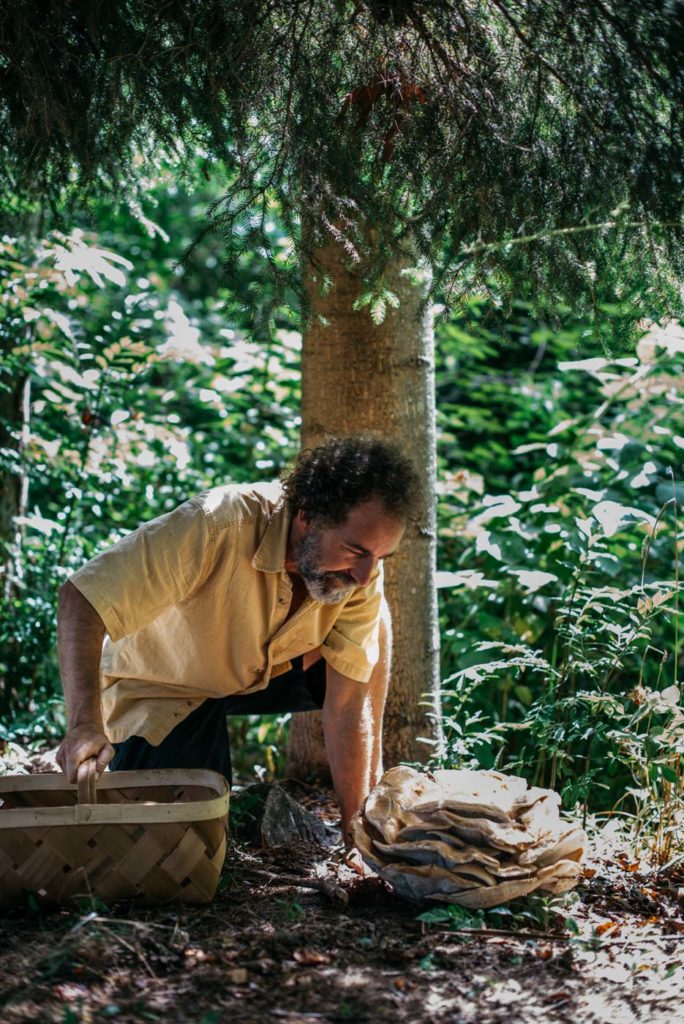
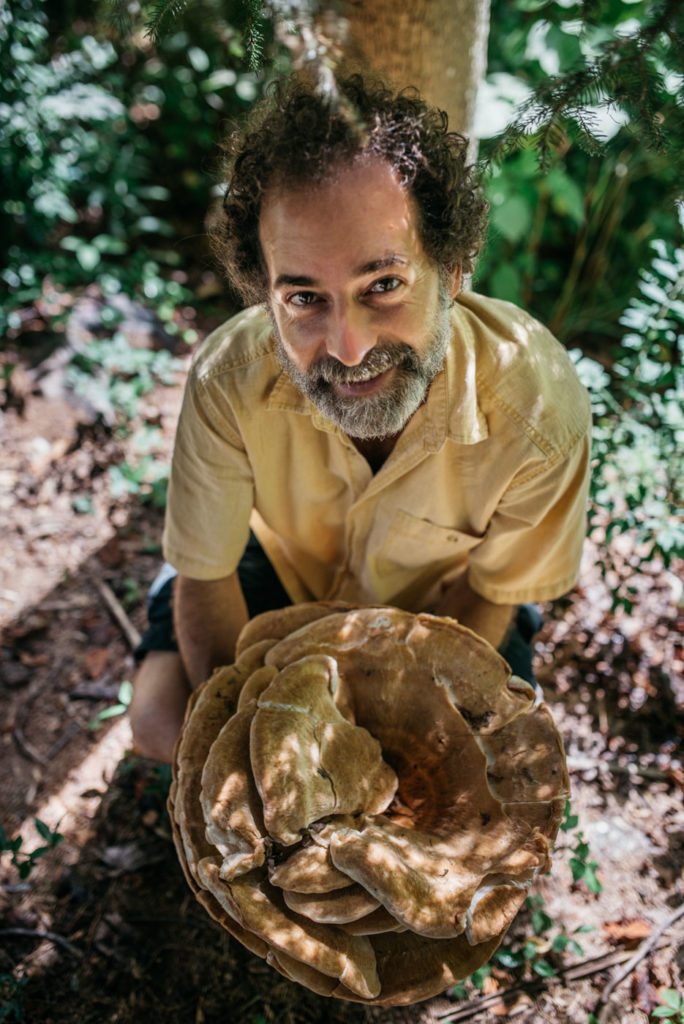
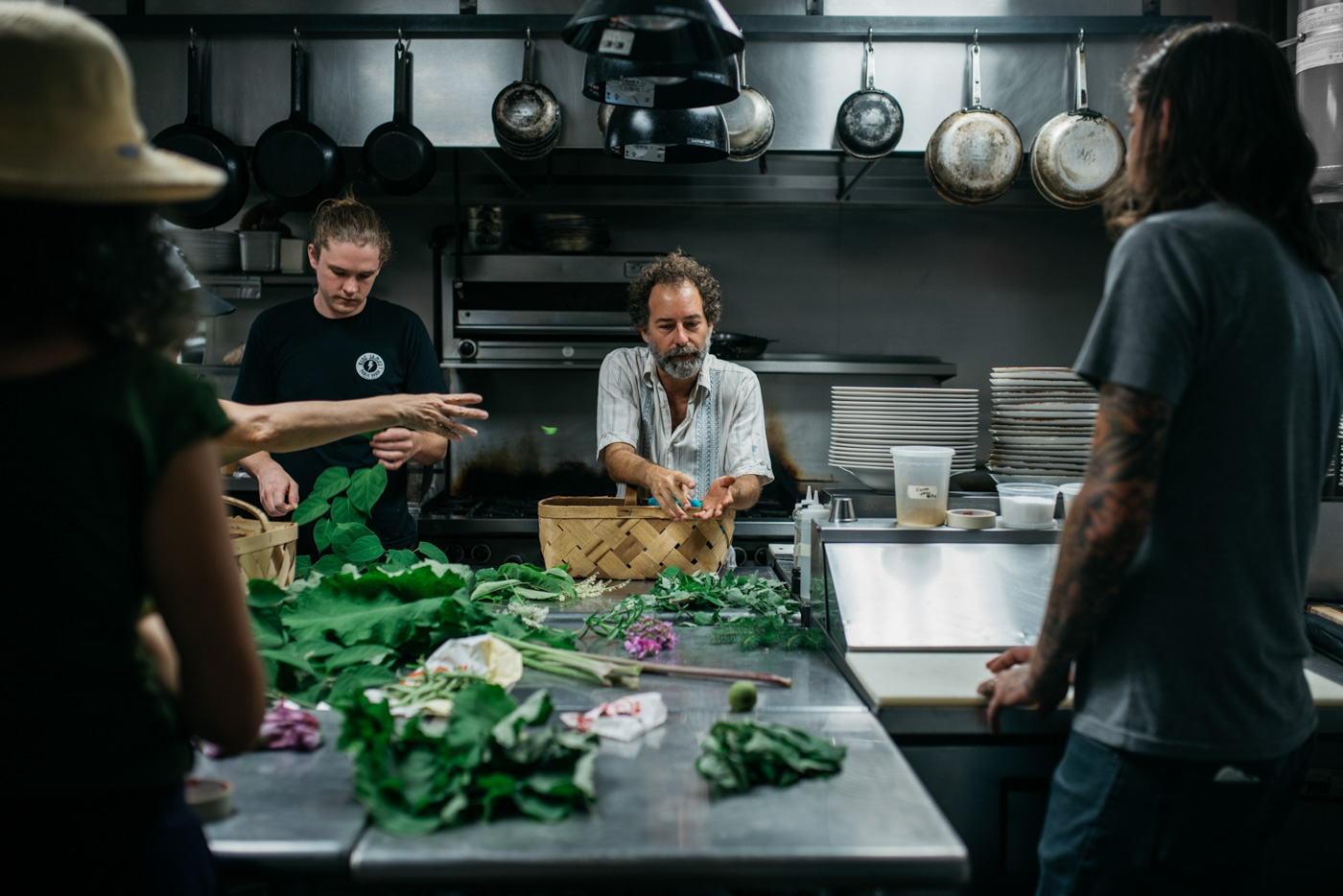
Tips for Foraging Mushrooms
Mushrooms start popping up in early spring, but the best time of year for foraging is late summer to early fall, July through October. Mushrooms love moisture, so the best time to seek them out is after a few days of rain.
In addition to your usual hiking gear, you’ll need a gathering basket. It’s best not to store them in a backpack. Mushrooms can be delicate; give them plenty of room and wrap them in towels or wax paper so they won’t bruise while foraging. Mushrooms growing on trees can be tough to remove. You will need a knife to cut the stem.
With most plants, the responsible rule of thumb is not to collect more than 10% of what is present, and never take more than you need. Although a controversial idea, Muskat says this doesn’t apply to mushrooms. “If you’re picking a mushroom that has already opened it’s cap, it’s already released its spores and it’s okay to take. It will come back.”
There are over 300 species of edible mushrooms in the world, but just because a mushroom isn’t edible does not mean it is deadly. Many species don’t make the cut because the texture is too tough or the flavor is unpleasant. For beginners, it’s best to stick to the four varieties that are easiest to identify: chicken of the wood, maitakes (hen of the wood), chanterelles and morels.
Chicken of the wood, also called sulphur shelf, is famous for it’s bright orange and yellow color. It always grows in an overlapped, shingled pattern at the base of dead or mature trees, most often oak or beech. The flavor and texture are as the name suggests. Chicken is hearty and great for replacing meat in any dish. Be careful not to pick chicken growing on cedar or eucalyptus trees, as those trees cause toxicity. Chicken may not agree with everyone. If you’ve never eaten this mushroom, try a small amount first to make sure it doesn’t upset your stomach.
Maitakes, or hen of the wood, make their appearance later in the season. Like chicken, hen can be found at the base of dead or mature oak and maple trees, but are not nearly as colorful. They can be light beige to dark brown, resembling dead leaves. They grow in bushy clusters and can weigh as much as forty pounds or more. Hen reliably grow in the same location, so remember where you find them. You might be able to harvest repeatedly. They’re a delicious and versatile mushroom, a great addition to any saute dish.
Nicknamed “Queen of the Forest,” Chanterelles are one of the most highly sought-after mushrooms. The color ranges from pale yellow to bright orange to peach and the shape resembles trumpet flowers with ruffled edges. They can be found in mossy patches, always near trees. They smell and taste like apricots, but their flavor is subtle, working well in delicate pasta sauces. It is imperative to confirm with an expert that you have correctly identified a chanterelle. They have a poisonous look-alike called the Jack O’lantern. You can differentiate the two by examining their gills; Chanterelles have false gills, which look more like veins and can not be removed from the cap as easily as true gills.
Morels make a brief appearance mid-spring and are harder to find. They tend to grow on south-facing slopes near ash, elm and apple trees, or on recently disturbed ground. Morels are hollow inside, and the cap is usually longer than the stem. It looks like sponge or coral and comes in every hue of brown and white. They pair well with meats and make an excellent mushroom gravy. Beware the morel look-alike, which is not hollow and has a wrinkly cap more like a raisin.
As a beginner, always ask a seasoned forager to verify your harvest. The same type of mushroom can look different depending on its location and growth conditions. After a while, you’ll learn to identify them with their variations and tell them apart from their dangerous doppelgangers.
Muskat’s philosophy is to go mushroom “seeking” rather than “hunting.” If you’re too voracious in your search, you may never find what you’re looking for, and you’ll miss another wonderful plant in the process. Be open minded, examine your surroundings, and don’t be afraid, for goodness’ sake.





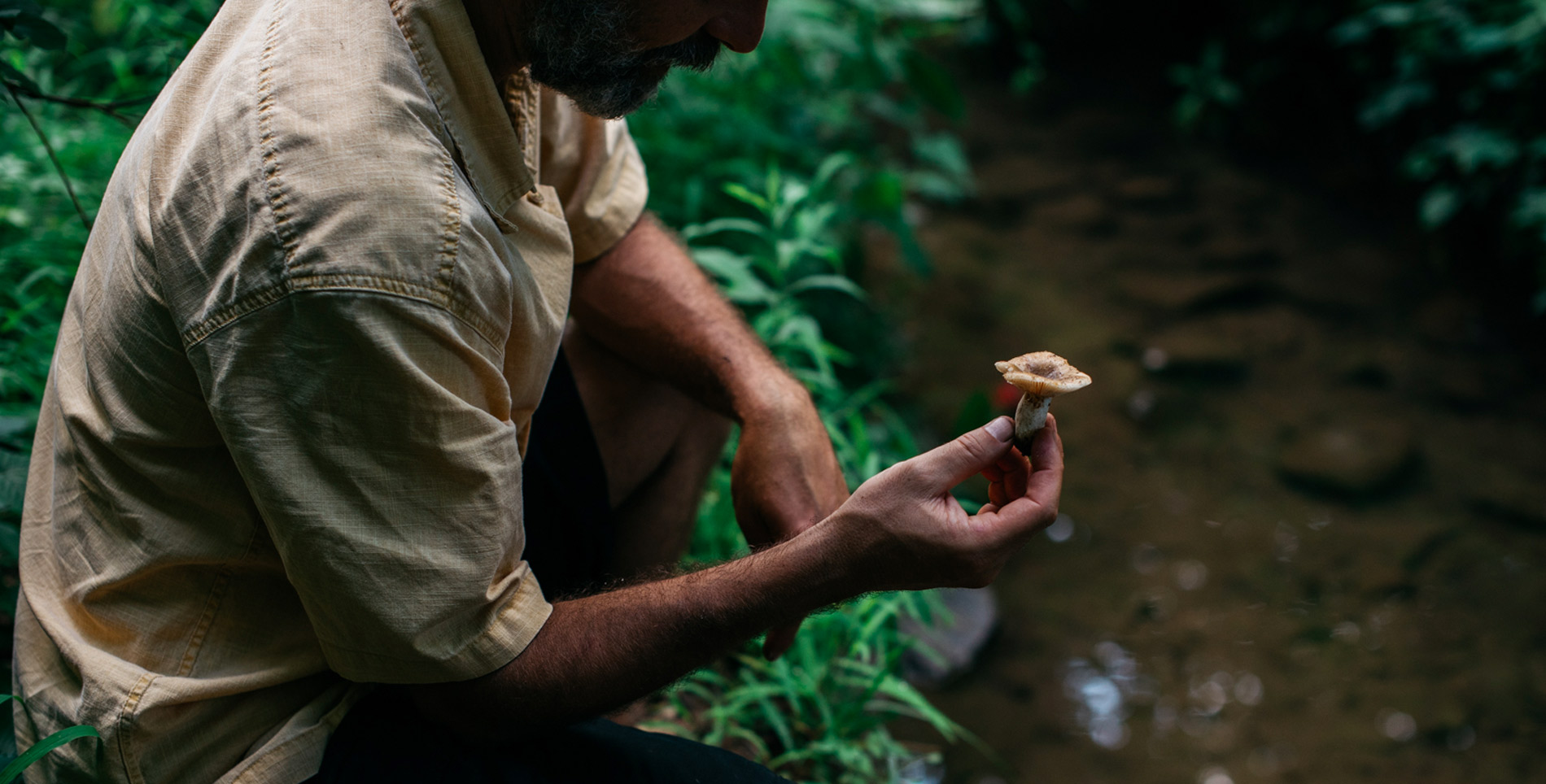

Our comments section is for members only.
Join today to gain exclusive access.